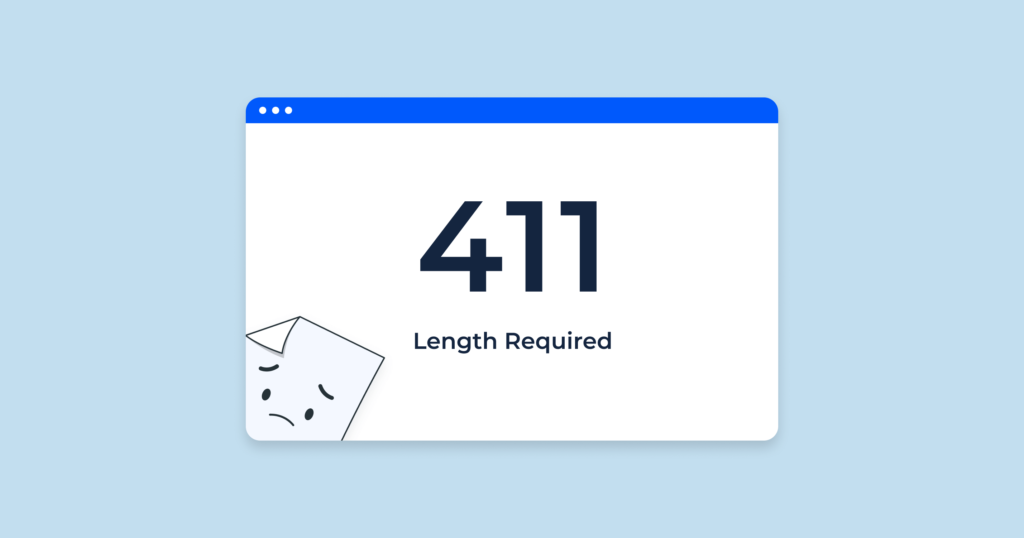Demystifying the 411 Length Required Error: Causes and Solutions – Your Comprehensive Guide

Demystifying the 411 Length Required Error Causes and Solutions - Your Comprehensive Guide
Introduction
In the intricate world of web interactions, encountering error codes is a common phenomenon that can sometimes throw a wrench in your online experience. One such code, the “411 Length Required” error, may leave you wondering about its significance and how to navigate through it. In this comprehensive guide, we’ll delve into the details of the 411 error, explore its underlying reasons, and provide you with a step-by-step guide to effectively troubleshoot and resolve it.
Understanding the 411 Length Required Error
The “411 Length Required” error is an HTTP status code that indicates that the server requires a “Content-Length” header to be included in the request, specifying the length of the content being sent. This error primarily occurs during POST requests where the server expects to receive a specific amount of data.
Common Reasons for the 411 Error
- Missing Content-Length Header:The main cause of the 411 error is when the client fails to include the “Content-Length” header in the request, leaving the server unaware of the data size being sent.
- POST Requests:The 411 error typically arises during POST requests, which involve sending data to the server for processing, such as form submissions or file uploads.
Resolving the 411 Length Required Error: Step-by-Step Guide
- Include Content-Length Header:Review your request and ensure that you include the “Content-Length” header with the correct value representing the length of the content being sent.
- Check Method and Headers:If you’re making a POST request, verify that you’re using the appropriate method and that the headers in your request are correctly structured.
- Use Dev Tools:If you’re a developer, use browser developer tools or API testing tools to inspect the request headers and ensure the “Content-Length” header is present.
- Update Code:If you’re writing code to make requests, double-check that you’re correctly adding the “Content-Length” header and providing the accurate length value.
- Check Frameworks and Libraries:If you’re using web frameworks or libraries to make requests, ensure that they automatically include the “Content-Length” header or require you to add it explicitly.
- Verify Server Expectations:Check the API or server documentation to understand if there are any specific requirements regarding the “Content-Length” header.
- Resend the Request:If you’ve rectified the “Content-Length” header, resend the request to the server to see if the 411 error persists.
- Inspect Network Traffic:Use network analysis tools to inspect the actual request being sent and received. This can help identify any missing or incorrect headers.
- Use Tools with Built-in Headers:Some tools and libraries have built-in support for headers like “Content-Length.” Utilize them to ensure correct header inclusion.
Conclusion
Facing the 411 Length Required error might make you feel like you’ve hit a technical roadblock, but with a clear understanding of its origins and solutions, you’re now prepared to tackle it effectively. Whether it’s about adding the “Content-Length” header, verifying your request headers, or updating your code, this guide empowers you to navigate through the intricacies of sending data to servers with confidence.
Remember, attention to detail and a systematic approach are key to resolving the 411 error and ensuring seamless data transmission in your online interactions.
For More Related Articles Browse Our Website Blogster.pk
For social Connection You can also Visit and follow our Social media Platforms
Facebook , Instagram, Linkedin, Pinterest, Quora, Twitter, Youtube.





